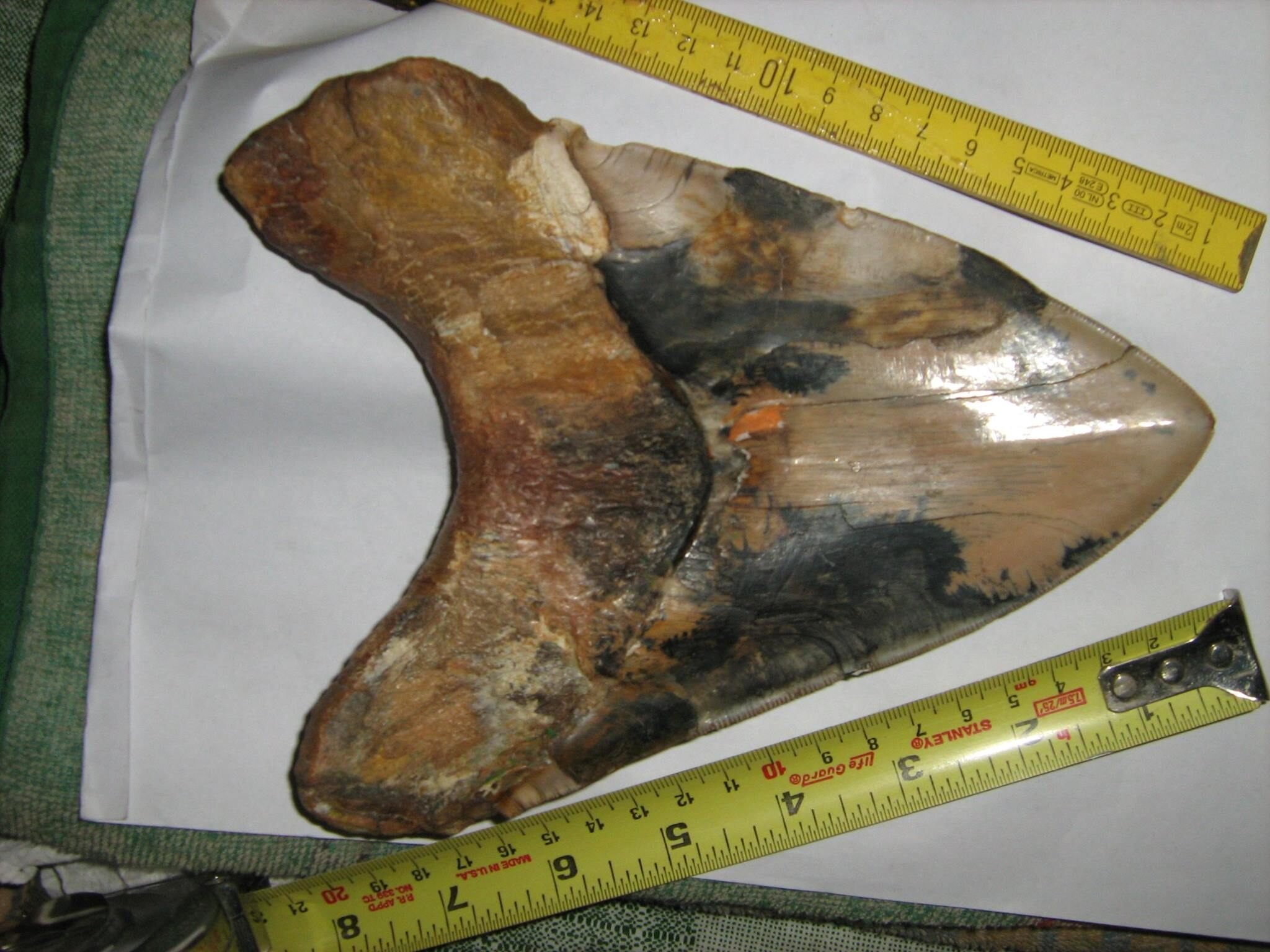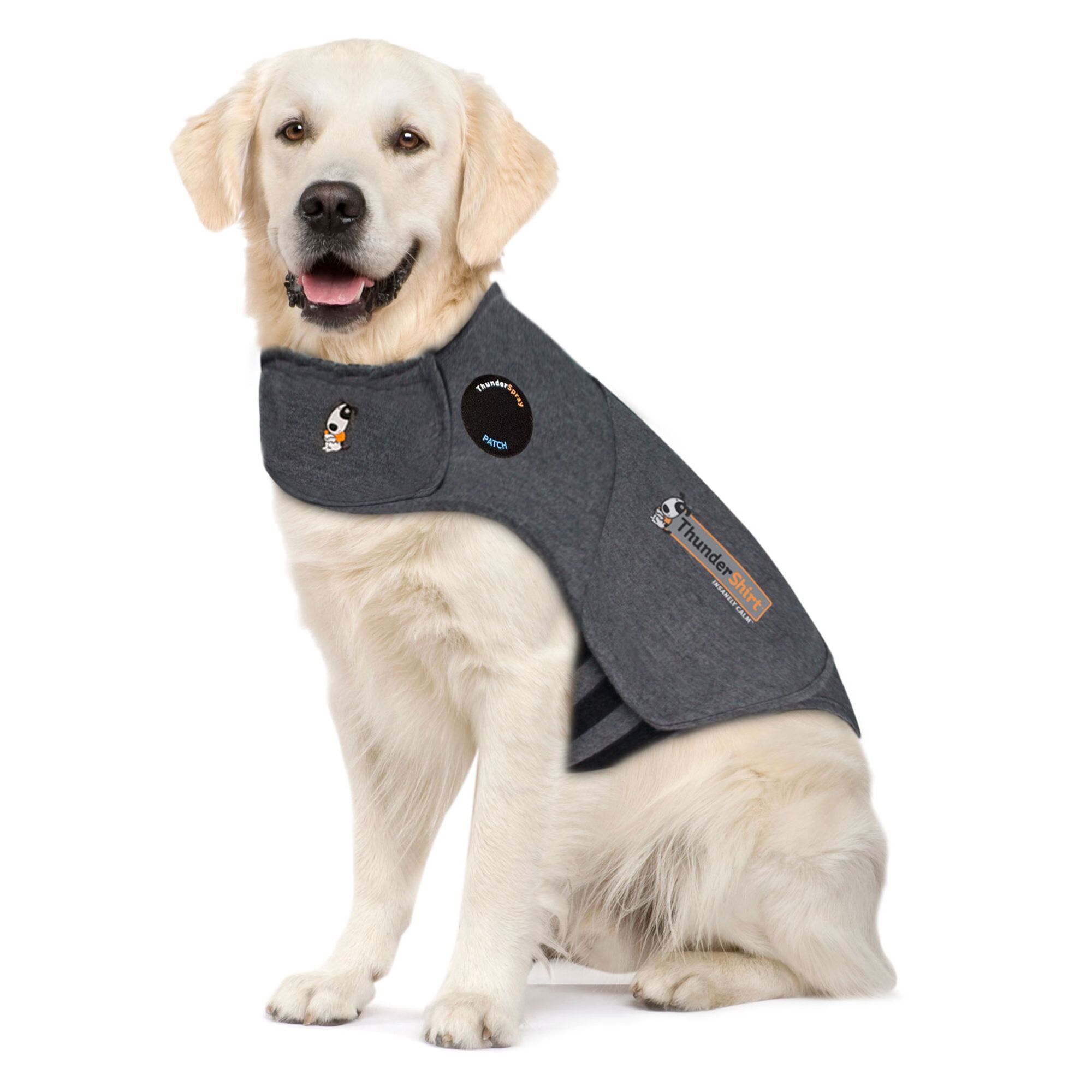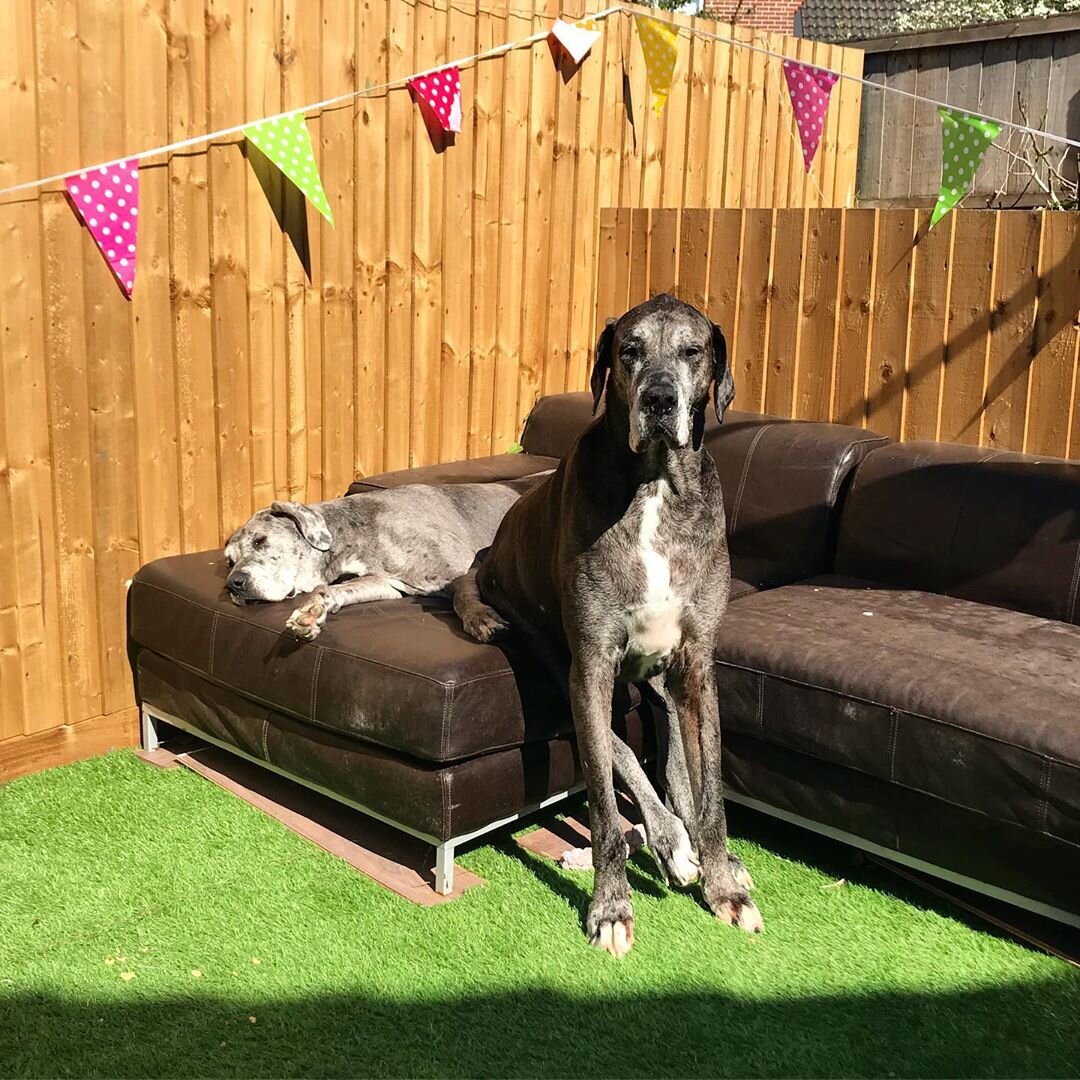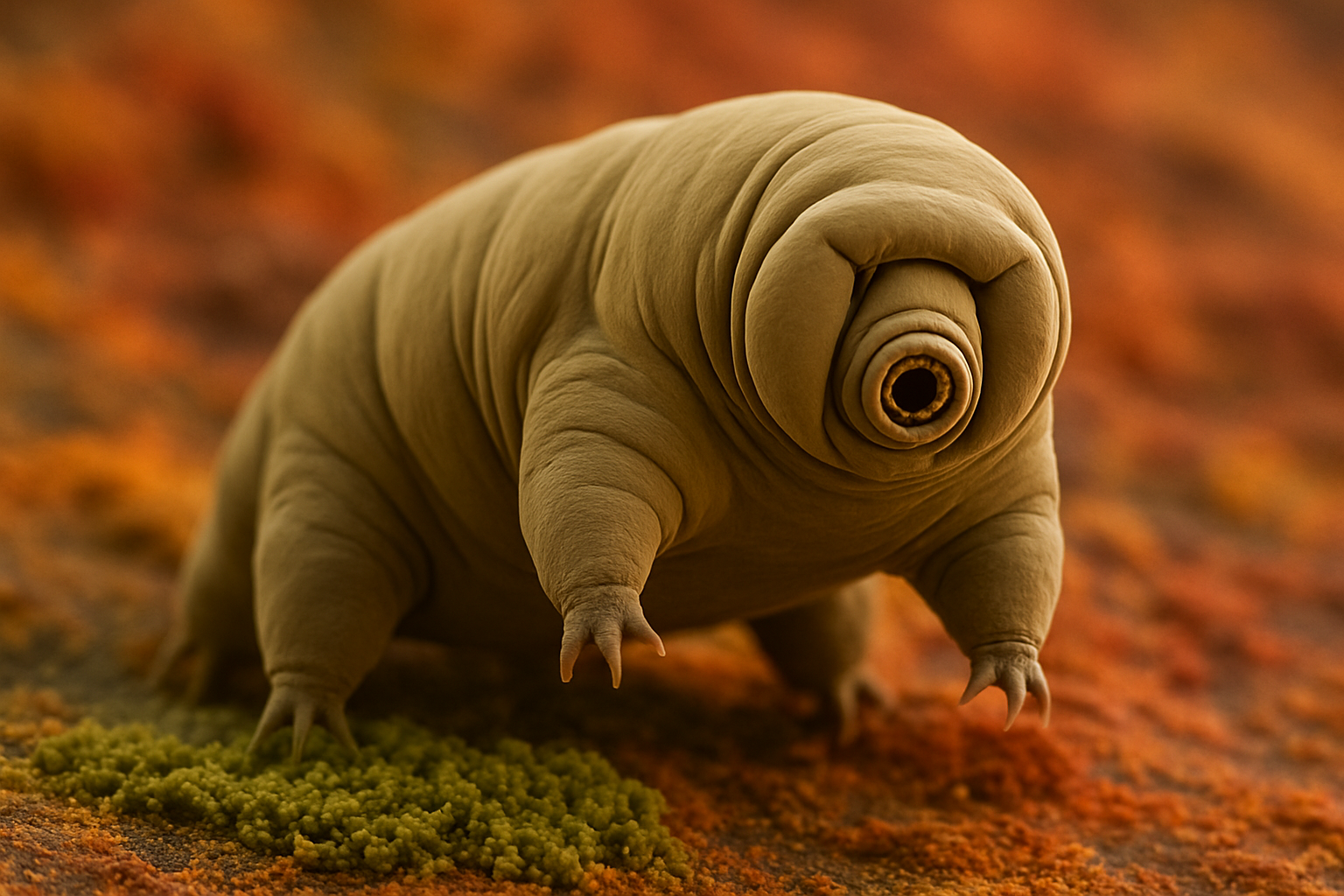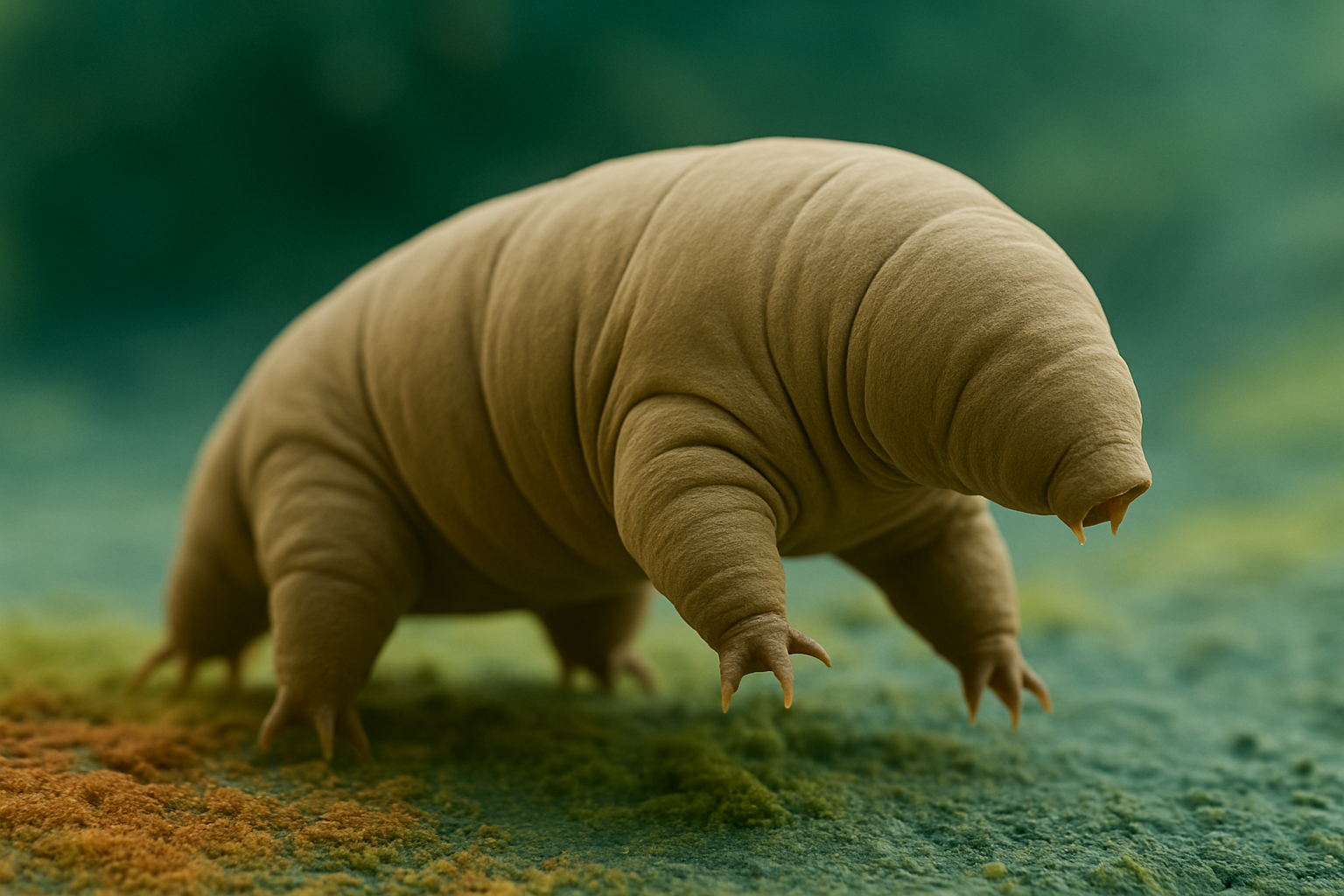For most pet owners, their fur babies are full-on members of the family. Whenever you’re forced to leave their care in somebody else’s hands, it’s important that you find someone who best fits your needs. Here are some tips to keep in mind to help you find the perfect dog walker.
Dating Apps for Dog Owners!
As pet owners, it’s easy to become fully obsessed with the furry parent lifestyle. To live that life to the fullest, it makes sense to make sure the person you’re romantically involved with is cut from the same fabric. Here are some of the hottest dating apps around to find you the pet co-parent of your dreams.
The Best Long Island Dog Parks
How Often Should you Bathe your Dog?
Is Smoking Around Pets Safe?
Every health teacher in human history will gladly brief you on the dangers of smoking. But as fully grown adults, we have the power to make our own decisions. Even the heaviest smokers can’t deny the toll it takes on their health, but it’s their body and their choice, so who are they hurting? The answer is those around you, whether it be your friends, children, or furry family members.
Megalodon: MONSTER SHARK
Ever since Steven Spielberg ruined the ocean for an entire generation in 1975, sharks have reserved a spot in the darkest parts of our imagination. They even made some people think twice about jumping in the pool. Sharks are indisputably one of nature’s impeccable hunters and have dominated the food chain for ages. They inspire feelings of fear, awe, and respect and rightfully so. However, what’s truly horrifying is that the sharks reigning over our oceans today pale in comparison to one of their prehistoric ancestors. The megalodon was one of the deadliest predators to ever exist on earth, let alone the ocean.
The Meg
The carcharocles megalodon terrorized the planet’s oceans from the early Miocene to the Pliocene epoch (3.6-23 million years ago). The sharks were born about 7 feet in length and typically ranged between 30-40 feet once they reached full adulthood. The largest of these gargantuan predators could reach 60 feet in length and weigh up to 100 tons.
That type of size warrants a pretty intense appetite. Megalodons were said to eat upwards of 2,500 pounds of food every single day. By comparison, that’s equivalent to eating the weight of a fully grown Titanoboa, one of their prehistoric predatory peers, who are monstrous creations of nature in their own regard. This appetite demand led them to take feast on the largest prey the ocean could offer, whales. With a bite force of over 40,000 pounds, megalodons could crush the skull of a whale just about as easily as you can bite through a grape.
Teeth
The name megalodon appropriately translates to “big tooth” in Latin and I’m sure you can imagine why. Their herculean jaws could reach 6-7 inches long, doubling the size of the modern-day Great White Shark. As you could infer, a set of teeth like that requires quite the foundation. The megalodon’s jaws were around 7 feet in diameter, wielding 250 razor-sharp blades of perfect evolution.
When tooth fossils were discovered during the Renaissance, scientists believed them to be dinosaur tongues based on their size. It wasn’t until 1667 that they were discovered to be shark teeth by Danish naturalist, Nicolas Steno.
The scarcity and majesty of these teeth have made them extremely valuable. A flawlessly preserved, non restored megalodon tooth over 7 inches can sell for upwards of $50,000. One of the largest teeth currently residing in a collection was found by the late Vito Bertucci in South Carolina and measured 7 3/8 inches. To this day, the largest megalodon tooth ever recorded was a 7.48-inch monstrosity found in Ocucaje, Peru. The Peruvian region is famous for its enormous megalodon fossils. Experts believe it’s due to the area’s presence of deep water with plenty of larger food sources. Unfortunately for collectors, it’s illegal for fossils found in Peru to leave the country.
The mystery of the megalodon has been explored by everyone from the Discovery Channel to Jason Statham. Scientists believe the species went extinct due to a lack of prey variation. Predators of that size need a lot of food to keep the tank running, and the fact of the matter is there weren’t many creatures around that would satisfy their appetites. Regardless, the megalodon is one of the most devastating forces nature has ever unleashed upon our oceans.
Keep Your Pets Safe During Fourth of July!
The sound of explosions is objectively pretty unsettling. Since you can’t exactly explain the traditions of the 4th of July fireworks to your pet, your best bet is to be proactive and have a plan ahead of time. Here are some precautions you can take to help your pet get through the 4th of July celebrations.
Keep Your Pet at a Safe Distance
It should go without saying, but the most effective way to keep your pets safe during the fireworks is to keep them at a safe distance. Dogs are especially sensitive to loud noises, so the further they are away from the boom, the better. Leave the television on or play some soothing music to help your pet drown out the sounds of the fireworks. Any background noise to take away from the explosions will be helpful.
Ideally, you’d want to stay with your pet to assure them everything is alright. But, if you’re out for the holiday, experts recommend leaving your dog in a safe, comfortable room that they cannot escape from. You could also hire a dog sitter to keep your dog company and keep a watchful eye. If your dog is severely anxious, you may want to talk to your veterinarian about possible medications to help the evening be less scary.
Calming Jackets
The feeling of being held tightly can give nervous dogs a sense of security. Products like Thundershirt utilize subtle, constant pressure when worn and make the dog feel secure and protected. 80% of Thundershirt users reported significant alleviation of their dog’s anxiety when wearing the coat. The jacket is most commonly used for thunderstorms and firework celebrations but can be useful for any stressful situation for your dog. It could also come in handy for separation anxiety, trips to the veterinarian, and general traveling.
Safeguarding with an ID tag and collar
ID tags should be worn 24/7 in case your dog curiously wanders off and gets lost. The stress of the explosions can drive dogs into a nervous state that they’ll do anything to escape. If the dog panics severely, they may try to get away from the noise of the fireworks by any means possible. There have been many cases of dogs bursting through windows and taking off to get further away from the explosions.
In the event that your dog runs off and can’t find their way back, whoever finds them will know where they belong. You should also consider a microchip with your current contact information for the same reasons. In the event that your pet gets lost, contact local animal shelters or animal control.
Post Celebration
Make sure all debris from the fireworks is cleared before letting your dog back outside. Even if you didn’t use any fireworks, it’s possible that debris flew in from a celebratory neighbor. A curious dog will eat just about anything, so don’t give them a chance to get sick after getting through the night of explosions.
Fireworks on the 4th of July don’t appear to be going anywhere anytime soon. They’re much more beautiful knowing your dog is safe, comfortable, and secure.
Koko the Gorilla
It’s hard not to marvel at the intelligence in the animal kingdom. From the beginning of time, humans have longed for a way to communicate with the other species that roam our Earth. One of the greatest instances of human-animal bonding and communication was the famous case of Koko the Gorilla. Not only did she prove that animals are capable of amazing feats of intelligence, but she also showed us the true depths of animal compassion and emotional awareness.
“Koko has a very strong sense of self…she’s got a strong ego.”
-Francine Penny Patterson
President and Scientific Director of The Gorilla Foundation
Background
The legend of Koko began on the 4th of July, 1971 at the San Francisco Zoo. With a medley of fireworks in the background, the Western lowland gorilla quite literally came in with a bang. Her original name was Hanabi-ko, which appropriately translates to, “fireworks child” in Japanese. In 1976, she was transferred to The Gorilla Foundation preserve in the mountains of Santa Cruz.
It was there that she met her best friend, Francine “Penny” Patterson, a psychology student at Stanford conducting an experiment for her Ph.D. program. With all due respect to Naomi Watts and Charlize Teron, no human has ever formed a bond with a gorilla quite like Francine Penny Patterson. In an attempt to communicate with the great ape, they started teaching Koko American Sign Language. She was able to add over 2,000 English words to her vocabulary and could capably communicate with Patterson and others involved. She also had about 1,000 additional signs for what Patterson refers to as, “Gorilla Sign Language”.
She became a global sensation and earned the cover spot of the 1976 edition of National Geographic. Her clout was acknowledged across the celebrity spectrum, as she sported friendships with the likes of Robin Williams, Leonardo Di Caprio, William Shatner, Mr. Rogers, Betty White, and Peter Gabriel.
Koko managed to score 70-90 on IQ tests when periodically surveyed. Forrest Gump, for instance, had an IQ of 75 and retired with millions in the bank, Medals of Honor, and acres of property. In true American fashion, the first words Koko mastered were, “Eat, drink, more”. Koko weighed about 250 pounds and took in 7 pounds of food per day.
She was actually raised alongside a male counterpart, a gorilla named Michael. Surprisingly, he and Koko never mated. Her caretakers believed Koko viewed Michael as a sibling instead of a potential mate. Unfortunately for Michael, the friend zone is alive and well across all forms of life.
Kittens!
Koko was an animal lover across the board, but kittens were her true soft spot. Ron Cohn, a biologist working with the program gifted Koko a stuffed animal for Christmas in 1983. But Koko would settle for nothing less than the real thing, and refused to play with her lifeless toy and constantly gestured the sign for, “sad”. The crew caved and got her a real kitten a year later. Koko chose a kitten named, “All Ball” from the litter and the two were immediately inseparable.
All Ball was tragically hit by a car after escaping Koko’s cage one day. Biologists reported Koko signing, “Bad, bad bad…Frown, cry, frown, sad, trouble” while making a weeping noise.
Koko let us venture deeper into the psyche of an animal than ever before. She passed away peacefully in her sleep on June 21st, 2018 at the age of 46. But the barriers she broke for human-animal interaction will forever be monumental.
Summertime Cool Down Activities
There’s nothing quite as satisfying as finding a way to cool yourself off on a hot summer’s day. And nothing is ever as much fun without a canine sidekick to accompany you. Luckily, there are boatloads of things for you guys to do together as the weather heats up. Here are some great ways to keep cool and be active in the summertime.
Swimming
Swimming is an excellent option in the blistering heat. You should absolutely make sure that your dog can swim before taking them, but most dogs are natural swimmers. A nearby pond, lake, ocean or pool are all options. Kiddie pools are an awesome, affordable way to keep your dog cool and let them have some aquatic fun. Swimming is a relaxing, refreshing, and therapeutic way to take your pup’s mind off the humidity. They’ll also get some exercise and quality playtime while they’re at it. Swimming makes us feel reinvigorated in an instant. Imagine how relieving it must feel when you carry a coat of fur on your skin.
Shady Hike or Walk
Dogs and humans still need to get their exercise when it’s hot out. In the name of not burning your dog’s feet on the ground and preventing heatstroke, take your walks on shady paths or green grass. You can also avoid the hottest parts of the day. 11 am-4 pm tends to be when the temperature hits its peak. Early morning or late evening walks are an excellent way to make sure your pup is exercising in safe conditions.
To help prevent heatstroke, cooling gear products are available for dogs. The Ruffwear Jet Stream Cooling Vest for Dogs uses a method of evaporation to keep your dog nice and chilled. They come in bandanas, vests, collars, and cooling mats.
Frozen Treats
Ice cream and summertime are forever roped together and rightfully so. And who doesn’t love ice cream? Pet Winery has a variety of awesome treats for the occasion. The ice cream is lactose-free, which is good considering the majority of dogs are somewhat lactose intolerant. They come in a variety of mouth-watering flavors. For dogs, they have ‘Barking Bacon’-composed of lactose-free whole milk and bacon. They also have a “Screaming Bondito” flavor for cats made of lactose-free goat milk and bonito fish flakes.
Brain Games
The heat can definitely take a toll on your furry friend. Hours of exercise in extreme heat puts your pup at risk for heatstroke and dehydration. A great way to keep your dog engaged and entertained is to focus on your dog’s mental aspect. Hide some treats throughout the yard and let them use their elite tracking senses and channel their inner wolf. Work on some new training routines and commands out in the backyard. A classic mental challenge for dogs is putting a treat under one of three cups and see if your dog can sniff out the treat.
Summertime vibes are second to none. Your pet by your side is truly what makes outside summertime so special.
Romeo: The Friendly Wolf
When you watch your dog rambunctiously chase squirrels through your backyard, it’s hard to believe that they’re descendants of apex predators. Biology and evolution are powerful forces, and the same dog you dressed up as an Oompa Loompa for Halloween last year has the DNA of wild wolves. In Juneau, Alaska, 2003, Nick and Sherrie Jans learned these animals were more compatible than you’d think.
First Meeting
While walking their yellow lab, Dakota, in the Mendenhall Glacier Recreation Area, they came across a young black wolf, who immediately started heading in their direction. Dakota broke from her harness and started beelining forwards the massive predator. Face to face a few feet apart, they looked at each other out curiously, each with no aggression in their body language. Dakota eventually trekked back to her owners and the three went on their way. A local skier reported a similarly playful encounter with the wolf and her dog days later.
The Jans’ began to seek out the wolf on their walks, and Nick, a renowned wildlife photographer, began documenting this anomaly of behavior. It was clear that the wolf loved his canine cousins, but especially took a liking to Dakota. According to Nick Jans, the wolf would pace, whine, and go absolutely ballistic with excitement to play with his Labrador buddy. From his loving nature, Sherrie Jans named the wolf, “Romeo” and the name stuck instantly.
Local Celebrity
Apparently, word spreads quickly about a friendly wolf. Visitors from out of town would venture to Juneau just to try to see Romeo for themselves. Crowds of people make lots of household dogs (and people) nervous, but Romeo remained poised and composed while people scrambled to see him in paparazzi-like fashion.
As friendly as he was, he didn’t exactly have a great sense of boundaries. He would often try to follow the Jans’ home to spend try to spend some more time with his furry pal. At the end of the day, Romeo was still a wild animal. The Jans would have to throw snow at Romeo when he got too close to their property.
Make no mistake, Romeo was making the most of all the attention. His accessibility and consistency made him every bit of a local celebrity.
“On a typical winter day, he’d be in position before the first light to meet the pre-work and early dog walking crowd, as if he’d punched a time clock; of course, he preferred his favorites, but in a pinch, others would do.”
-Nick Jans
Controversy
Romeo’s area had plenty of food, no other predatory threats, and plenty of wide-open space. He occupied his territory for five years. As beloved as he was by many, his presence was far from uncontroversial. Alaskans were in the midst of a dispute about potentially limiting the state’s wolf population. This meant plenty of folks were advocating for Romeo to be removed and placed elsewhere.
Tragically, Romeo was killed by hunters in September of 2009. His death caused a public outcry, and the two men responsible were arrested, placed on probation, and had their hunting and fishing licenses temporarily revoked, though many locals advocated for harsher punishments. A memorial service was held for Romeo in November 2010, where a plaque was unveiled in his honor.
Romeo’s story seems destined to be told on the big screen someday. Nick Jans went on to release Romeo’s story in his New York Times bestseller, A Wolf Called Romeo. But it also serves as a reminder that though these are wild animals, they share a considerable amount of DNA with our four-legged whippersnappers.
Listen to our podcast about Romeo: The Friendly Wolf with Nick Jans as a Special Guest !
Freddy-The World's Tallest Dog
7 feet tall and 210 pounds sounds normal for a professional basketball player, but a dog reaching that size is difficult to imagine. Luckily, we don’t have to imagine it, we can just see the real thing for ourselves. A Great Dane named Freddy was named the tallest dog in the world by Guinness World Records back in 2017 and his legend has continued to grow ever since.
Freddy stands 3 feet and 4.75 inches tall on all 4’s and reaches up to 7 foot 5 on his hind legs. At his peak, Freddy would be taller than anybody currently playing in the NBA.
Birthday
Not only is Freddie the tallest dog in the world, but he’s also the oldest Great Dane alive today. Nicknamed the “heartbreak breed”, some Danes only live to be 6-7 years old. Big Freddy turned 8 years old on May 17th and celebrated his special day with his family in Weeting, Norfolk in the United Kingdom. Freddie actually has a sister named Fleur, but she was born minutes after Freddie, allowing him his title of Oldest Dane.
“Freddy and Fleur had a great birthday party and they both had the best time. We decorated the garden and they got loads of their favorite treats and cuddly toys.”
Claire Stoneman, Owner
Dynamic Duo
Besides his sister Fleur, Freddy’s best friend is his 7-year-old neighbor named Erin. Before the coronavirus pandemic broke out, Erin would come to visit Freddy and Fleur virtually every single day. Much to everyone’s joy, the friends were thankfully able to reunite at Freddy’s 8th birthday party. The Great Dane’s befriended Erin from an early age and they’ve had an unbreakable bond ever since. Erin has known Freddy and Fleur for quite literally her entire life.
“She isn’t fazed by his height at all and has always been close to him… He’s so big that he towers over her. She cuddles up to him on the settee to watch television and he just towers over her, but they have a very sweet relationship.”
Peter Manley, Erin’s father
Diet
Clearly, a 210-pound pooch like Freddy is going to need to eat more than the average dog. The Stoneman’s claim to spend $630 a month on dog food and treats. Besides kibble, the big guy loves to munch on roast chicken, minced beef, and juicy steaks. Freddy’s days mostly consist of eating, playing with Fleur and Erin, taking a break for some cuddles, and then eating some more.
Gentle Giant
The sheer presence of a 7 foot 5, 210-pound dog would understandably intimidate some people. Stoneman tends to walk Freddy and Fleur in the early hours of the morning to avoid being swamped by big crowds. But despite their immense size, Great Danes are reputably mild-mannered, obedient, affectionate, and intelligent companions.
“They’re very kind-natured and put their paws on you if they know you’re upset. They love cuddling and I sleep with them on two mattresses in the living room at night.”
Claire Stoneman, Owner
Ironically, Freddy was the runt of the litter when he was adopted. Now he proudly sports ownership of multiple Guinness World Records and lives a life of pure happiness.
Mike the Headless Chicken
There are three things certain in life. Death, taxes, and that people will go to the ends of the earth to please their mother in law. While attempting to prepare an impressive meal, Lloyd and Clara Olsen ended up with a headless chicken on their hands.
History
The legend began on September 10th, 1945 in Fruita, Colorado, where the Olsen family was expecting a particularly meticulous houseguest, Clara’s mother. Recognizing the stakes, Lloyd knew he had to come to the table with a jaw-dropping spread. Clara’s mother loved fried chicken, and Lloyd took to the backyard to start the preparations. The unlucky selection ended up being a 5 1/2 pound Wyandott chicken named Mike.
Survival
When the time came, Lloyd chopped at Mike’s head to get it over with. Rumor has it that the Olsen in law was fond of the chicken neck, so Lloyd’d goal was to preserve as much as he could. Trying to keep the neck intact altered his aim ever so slightly. After the blow, Mike stumbled around quite literally like a chicken with its head cut off. The ax missed the jugular vein and a blood clot prevented him from bleeding out. 80% of Mike’s brain stem was intact and somehow, miraculously, Mike was still alive.
The brain stem controls reflexes, breathing, and heart rate. So Mike was still able to perform basic bodily functions.
Mike was still chock full of life when the Olsen’s checked on him the following morning. They decided if Mike had this much will to keep going, they would have to try to take care of him. They managed to feed Mike grain and water via an eyedropper. The Olsens couldn’t ignore that there was something particularly special about this chicken. So, Lloyd packed up his feathered friend and drove 250 miles to the University of Utah.
During Mike’s time decapitated, he was every bit of a celebrity. He began touring sideshows and was photographed for dozens of magazines and news outlets. He even earned himself a feature in TIME and LIFE magazine. His clout inevitably raked in a lot of money for the Olsens. Audience members would pay 25 cents admission to view him in public. On average, Mike would bring in about $4,500 per month, equal to $51,500 by today’s measures. Mike himself was set to be valued at $10,000, or $140,000 today.
Legacy
Unfortunately, Mike choked on a kennel of corn at a motel in Phoenix March 1947. In his honor, ‘Mike the Headless Chicken Day’ was established in 1999 and the tradition has persisted. The event includes egg tossing, a chicken cluck off, chicken bingo, and a 5K race run ‘headless chicken style’. The celebration is held on the 3rd weekend of May, every year since it’s beginning.
He also inspired poultry themed comedy punk band known as the Radioactive Chicken Heads. They released a single in 2008 by the name of, “Headless Mike”.
Mike certainly made some noise across plenty of avenues of American culture. His tale is one of the strangest in animal history.
Listen to our Let’s Talk About Cool Animals! episode on Mike the Headless Chicken!!
Tardigrades
When we think of prehistoric animals, beasts like Dinosaurs, Wooly Mammoths, and Sabre Tooth Tigers are usually the first to come to mind. Shockingly enough, there are organisms that roamed the Earth 600 million years ago that live among us to this very day. Tardigrades are microscopic organisms that have existed on this planet for longer than we can fathom. Up close, they look like the Michelin Man wearing a ghost buster’s suit. Like most great things in life, they come with a variety of nicknames. In the case of the Tardigrade, they’re commonly known as water bears and moss piglets. Here’s some more info about one of the most unique organisms Earth has ever mustered up.
History
Tardigrades have existed on Earth for about 600 million years. To put that in perspective, the Dinosaurs were around roughly 250 million years ago. Despite basically being grandfathered into planet Earth’s ecosystem, they weren’t actually discovered until 1773 by German Pastor, Johann August Ephraim Goeze. This is because they range between 50microns to 120microns, so they’re invisible without a microscope. The name Tardigrade directly translates to, “slow-moving”.
So, what are they exactly?
There aren’t any other organisms on the planet quite like Tardigrades. Technically, they belong to the Tactopoda section, but they have no direct relation to any other organism on Earth. Water bears have up to 1,300 species amongst themselves.
Tardigrades are found in areas with aquatic moss. To stay hydrated, they require a thin layer of water around themselves at all times. Their ideal habitats include lichens and freshwater moss (this is how they got the title of moss piglets). But rest assured, they’re far from limited. Water bears can exist in any environment, from sand tunes in the desert to the Antarctic tundra. They can survive in temperatures ranging from -272 Celsius, -458 Fahrenheit, to 150 Celsius, 302 Fahrenheit. Their life spans range from 2 weeks-100 years, so they make the most out of whatever habitat they end up in.
Plant cells are their food of choice, but they’ve also been known to eat other micro-organisms and even fellow tardigrades. What’s fascinating and frightening at the same time is that these organisms actually use teeth to grab onto their food and suck the juices out of the algae.
Some species of tardigrades reproduce sexually while others reproduce asexually. The mating process takes up to an hour and the eggs typically hatch after 90 days.
Survival Skills
In true warrior spirit, Tardigrades are the only organism to survive all 5 of Earth’s mass extinction periods (6 if you count 2020). Part of their survival skills includes radiation tolerance. Water bears are able to withstand 5000 grays of radiation. By comparison, it would only take 10 grays of radiation to wipe out humans. Some parts of Chernobyl were exposed to 50 grays of radiation and haven’t fully recovered to this day.
You don’t last 600 million years without a survival tactic or two. Moss piglets have a process known as anhydrobiosis. This happens when water bears become dehydrated and roll up into a ball. From there, a sugar called Trehalose replaces the water in the cells and keeps the tardigrade alive. Another survival tactic is cryptobiosis, where the animal slows down its metabolic rate to a virtually undetectable level.
It’s easy to forget about organisms that aren’t visible with the naked eye. But it’s mind-boggling to comprehend that creatures inhabit this world that were around 600 million years ago.
LISTEN TO OUR PODCAST ABOUT THESE AMAZING LITTLE DUDES!
Benefits of Daily Walks
Quality time is necessary in just about any relationship. It’s important to find something you both enjoy, and work from there. As owners, it makes us happy to make our dogs happy. When it comes to your pet, a daily walk is one of the most mutually beneficial activities out there. Here’s why daily walks with your dog are even more important than you thought.
Strengthen the bond
Spending time exploring together is bound to intensify the bond between two souls. This one on one time is instrumental to your dog’s behavioral development and the dynamic of your relationship. When you’re out adventuring, your pup is entirely trusting you to keep them safe and eventually get them back home. Communicate with your dog and praise them whenever they’re behaving the way you’d like them too. Positive encouragement reinforces the behavior you want to see and helps them learn what you want out of them.
Physical and Mental stimulation
Exercise is the most obvious perk of daily walks with your canine counterpart. On average, dog owners are 57% more likely to achieve the recommended degree of physical activity than non-owners. Studies also concluded that a mere 30-minute stroll three times a week can lower the average person’s weight by 5% and the average dog’s weight by 15%. So, this is truly a win-win situation for both of you. If your dog is particularly energetic, you may be better suited taking two walks a day to make sure your pup gets a chance to blow off enough steam. Exercise walks (also known as leadership walks) make sure you both get your heart rates jumping. These walks are centered around getting from point A to point B quickly and making sure your dog walks beside you the entire time, not venturing off to pee on every lilac they can lay their eyes on.
Beyond physical exercise, walks can provide a lot of mental activity. Taking “scent walks” are an excellent way to keep your dog mentally engaged and stimulated while you’re out. Scent walks basically prioritize letting your dog thoroughly sniff interesting smells that get their attention instead of reaching a certain destination as quickly as possible. Taking your dog to a new park or trail can spice things up, expose them to some brand new scents, and keep them mentally engaged. Scent walks and exercise walks both have their advantages. Pay attention to what’s best for your particular situation.
Socialization
There’s no better time to socialize your pup than walking around the community. Walks can provide great opportunities to familiarize your dog with other dogs and people. The more used to a situation they are, the more likely they are to behave. Dog parks are another way to socialize your pup, but with various smells and different pooches to pay attention to, the situation could be overwhelming and stressful. A small interaction on a walk is far more intimate and could be more effective if your dog is naturally on the anxious side. Each positive interaction will only strengthen their confidence and make them more comfortable in future social situations.
Summary
Daily walks are all too important for a healthy pup and a healthy relationship between the two of you. Be sure to pick up after them, use a leash, and create some wholesome memories.
Benefits of Brushing your Pet's Teeth
By this point in human existence, we’ve confirmed that brushing our teeth is a hygienic task vital to our daily routines. We’re well aware that poor dental hygiene means bad overall health. The same rules are in play for our canine counterparts. You may think, “Dogs were just fine for thousands of years without brushing their teeth, what could be different now?” While they may have gotten by, it wasn’t without pain and discomfort. Just like for people, daily tooth brushing is recommended for pets to maintain an all-around healthy lifestyle.
Plaque and Tartar
Tartar and plaque can build up in as little as 48 hours.
Pets build up plaque just like we do, and a consistent brushing routine can be the difference between a pearly white smile and an expensive trip to the vet for your furry friend. When plaque compiles in the gums and combines with saliva and bacteria, tartar is formed. If not dealt with, tartar can spread throughout the gums and lead to gingivitis and periodontal disease. Periodontal disease results in the gums receding from the teeth, leaving your pet vulnerable to infections, swelling, or tooth loss. Plaque typically hardens in about 36 hours, so even if you can’t brush your pet’s teeth every single day, a few times a week should be able to do the trick. When you’re not brushing, pet-safe chew toys and bones are an excellent way to keep your pet’s teeth active while keeping them mentally and physically stimulated.
“Pets don’t show pain from dental illness.” According to the veterinary dentist, Tony M. Woodward. “When they’re in pain, I wish dogs would paw at their faces or stop eating, but they don’t.” This makes it all the more important to be on high alert for red flags. Bloody/swollen gums and yellow/brown layers of tartar are warning signs of these dental issues. Roughly 85% of dogs over the age of four have periodontal disease. They’re also five times more likely to contract gum disease than humans. Toxins from oral diseases like periodontal can even seep into your pet’s bloodstream. Once inside, they can harm organs responsible for filtering blood, such as the heart, liver, and kidneys.
Things to avoid!
Experts recommend getting your pet’s teeth thoroughly cleaned by a trained professional before beginning a steady tooth brushing routine of your own. This will ensure that you don’t push any bacteria further into the bloodstream and make matters worse.
Teeth and gums are naturally a sensitive area. Be extremely gentle when brushing to prevent any unnecessary irritation. Be sure not to brush too hard. Overdoing the brushing can cause serious irritation and discomfort in the gums of your pet.
It’s also recommended that you don’t forcibly open the dog’s mouth to start cleaning. Your best bet is to keep your pet comfortable, keep their mouth closed, gently lift their lips and brush away. Dental problems for pets typically occur in the back, upper teeth, so be sure to not neglect that particularly sensitive area.
Dental hygiene is extremely important for a healthy life in any regard. Maintaining disciplined teeth cleaning routine for your pet can go a long way in ensuring they live long, happy lives.
Benefits of Working From Home with your Pet
The COVID-19 Pandemic has changed life as we know it. Tough times like these typically call for changes and adjustments in all the facets of everyday life. With non-essential employees across the world working from home, people have gotten used to dealing with this new normal. Part of that new normal entails having your pet(s) around throughout the workday. While this can be viewed as a distraction, there are plenty of good things that can come from it. Here are some benefits of working from home with your pet close at hand.
Mental Health
The workday can be stressful on its own. So can breaking a routine that you’ve grown accustomed too. The good news is, the medicine is walking around your house, waiting to scoop up crumbs from your sandwich and give the mailman some sass. According to the Human-Animal Bond Research Institute, working from home with a pet decreased the owner’s levels of stress and anxiety. Beyond emotional support, being around your pet can even help lower your blood pressure.
The Mental Health Foundation says pets boost happiness and motivation. On top of that, pets flat out leave you in a better mood. Feeling good is an excellent way to guarantee a productive workday.
Pet Happiness
Your pet will reap most of the benefits of this situation. Pets love being around their owners as much as possible. So they must be thrilled at the idea of you not having go head out to the office every morning. As owners, we are happy when our pets are happy. Working from home grants you the opportunity to spend high-quality time with your pet throughout the day. Your furry companion will be certainly thrilled having you around constantly, especially those with separation anxiety.
Increased Productivity
A study done by Virginia Commonwealth University concluded that having a pet present in the workplace can decrease stress and increase productivity. The study was regarding bringing a dog to a tangible workplace, but the same rules apply for having a pet in your workspace at home. If a conflict arises, pets could be just the stabilizer you need to remind you that everything is alright. Low-stress environments are ideal for optimal productivity.
Quality Breaks
Despite the boost they can give to your productivity, they also provide an excellent outlet to take a break and digress. These breaks can serve as a healthy distraction to recharge your batteries for the second half of the day. Taking your pet out for walks, playing with them in the backyard, or just spending some time with them on the couch can clear your head and mentally replenish you. Walks and backyard playtime can also help keep you in shape. To keep both of you in routine, you can designate a certain time of the day for playtime with your animal companion.
The pandemic has forced employees around the world to make adjustments on the fly. During these days where we have no choice but to work from home, having your pet by your side could be just what you need to keep you sane and productive.
Should you wear a mask on your daily walk?
To Mask or Not Mask?
“Nobody cared who I was until I put on the mask.”
-Bane
“…Mask off”
-Future
Daily doses of fresh air and exercise are increasingly vital during this era of quarantine and social distancing. Exercise and some vitamin D are proven to be astronomically beneficial for physical and mental health. One of the questions that have continually come up during this pandemic is just how necessary masks are for going outside. So when you take your dog out for a walk around the neighborhood, should you be wearing a mask?
One of the biggest issues with this virus is that carriers can be completely asymptomatic and unknowingly exposing others to the disease. As an extra precaution, the Center for Disease Control, more commonly known as the CDC, has advised people to use non-medical cloth and masks to keep their faces covered. President Trump made it clear that this was a voluntary measure and by no means a requirement when going outdoors. However, all parties agreed that wearing some form of mask could only serve as an additional method of protection. If you tend to cross paths with a few neighbors on your daily walks, wearing a mask for extra means of protection is never going to be detrimental. If you venture to a hiking trail, beach, or remote piece of property where the chance for human interaction is slim, you’d likely be fine to walk around mask free. Either way, the mask is not legally required but serves as an extra insurance policy.
While masks are encouraged, the CDC does not recommend using medical or surgical grade masks for daily walks and outdoor activities. The caliber of these masks far exceeds what an average person needs for a stroll around their neighborhood. The CDC along with the White House Administration encourages people to save those grade masks for health care workers on the front lines combatting the virus who truly need them.
“Medical protective gear must be reserved for the front line health care workers who are providing those services.”
-President Trump
Dr. Robert Redfield CDC Director reiterated the CDC’s message while speaking alongside the White House Administration. He doubled down on the claim that asymptomatic carriers were a bigger transmitter than they’d previously been projected. He stated that wearing masks served as, “…another mitigation strategy to protect someone from spreading the virus to someone else.”
“The purpose here is to first and foremost, embrace social distancing. That’s the number one thing, that’s the powerful weapon.”
-Dr. Robert Redfield, Director of the Center for Disease Control
Redfield added that areas with considerable community transmission are the biggest concern for asymptomatic carriers, as contaminations could spike without warning. He went on to add, “We know that a face barrier can interrupt the virus particles that can go from one person to another.”
While not required, wearing masks while walking your dog or doing other outdoor activities is a simple safety measure you can take to help your chances. If you’re having trouble finding a mask, the CDC recommends using whatever spare cloth you have around the house to make something to wear on your face.
Togo - Canine Hero
By now, you’ve been living under a rock if you haven’t heard about the legendary expedition of Balto. Even if you did live under a rock, odds are Patrick mentioned it at some point. But behind all of Balto’s mythology lies the story of a dog who’s heroism often goes unsung. This is the tale of Togo, recognized by Time Magazine as, ‘The most heroic animal of all time’.
The Outbreak
In 1925, a lethal outbreak of Diphtheria left the small community of Nome, Alaska in grave danger. Caused by the bacterium Corynebacterium diphtheria, the deadly disease covers the back of the throat. This makes breathing extremely difficult and puts you at risk for heart failure, paralysis, or worse. As of 1921, the United States reported 206,000 cases of the disease, with 15,520 cases proving fatal. In order to save the people of Nome, a serum would have to be retrieved immediately.
The Elements
Unfortunately, it happened to be the coldest recorded winter in Alaskan history. The elements were so treacherous that it rendered airplane travel impossible. It was cold enough to freeze the harbor itself, nulling the possibility of a serum being delivered by ship. This meant teams of sled dogs were the only option. Anchorage was the closest city with the necessary serum, but the only method of delivery was via train. Their only chance was to intercept the train when it stopped in Nenana, a whopping 674 frozen miles away.
The Journey
Balto and his musher, Gunner Kassen deserve their praise for finishing the last leg of the journey in a blinding blizzard. But the efforts of Togo and musher Leonard Seppala often go overlooked. Being the most experienced musher of the crew, Seppala volunteered to take the toughest stretch of the journey. Togo was 12 years old at the time and Seppala was 47. Despite their age, they took on the full wrath of mother nature.
Togo led Seppala’s pack to cover 170 miles in three days in the face of the most difficult conditions imaginable. While crossing the perilous Norton Sound, Seppala’s pack became stranded on a floe of ice. Seppala quickly tied a lead to Togo up front and began tossing the dogs over several feet of water to get them across. The weight of the floe and the sled caused the line to snap, yet Togo remarkably got the line out of the water and began pulling over his shoulders to get his fellow dogs to safety.
Togo and Balto were teammates with one common goal, bringing a serum back to Nome as quickly as possible. While Balto and Kassen got most of the credit, the heroism of Togo and Seppala is awe-inspiring. In the years following the run, Seppala and his pack made appearances all across the United States. The crew’s last documented race was against a team of locals in New England, where Seppala’s crew prevailed victoriously.
Seppala and New England Musher, Elizabeth Recker, opened a kennel of Siberian Huskies in Poland Spring, Maine. Togo lived out the rest of his days there in joy and tranquility before passing away at the age of 16. Seppala passed away in 1967 at age 89. In his legacy, the Leonhard Seppala Humanitarian Award is administered each year to the Iditarod musher who takes the best care of their dogs. As for Togo’s legacy, Disney + released a film in 2019, chronicling the bravery of Togo and Seppala’s adventure. The film even stars Togo’s bloodline descendant, a Siberian Husky named ‘Diesel’ as the brave pack leader.
LISTEN TO OUR PODCAST ABOUT TOGO!
Impact of Obesity in Dogs
For better or worse, dogs love to follow in their owner’s footsteps. As of 2018, studies show over 40% of Americans were obese. Coincidentally, 56% of the nation’s dogs were obese or overweight. Dogs are considered overweight once their weight reaches 15% above average. They matriculate into the obesity zone when their weight exceeds 30% above average.
Osteoarthritis
Also known as Degenerative Joint Disease (DJD), osteoarthritis is what happens when joint cartilage deteriorates, causing inflammation to intensify. It makes simple tasks like standing up, going upstairs, and jumping onto a bed or couch extremely more difficult. Cartilage cushion naturally breaks down over time. However, obesity adds unnecessary stress to the joints with every step your dog takes, expediting the process of osteoarthritis a great deal. Frequent stress from physical activities like walking, running and playing take a toll on your dog’s joints. The additional weight makes each movement more stressful and causes the cartilage to break down more easily. Osteoarthritis is most common in larger breeds like Golden Retrievers, Labrador retrievers, and German Shepherds, but obesity makes any breed vulnerable to the disease.
Diabetes
Diabetes Mellitus is the result of insulin withdrawals in the pancreas, which impact’s the animal’s use of fats, proteins, and sugars. Some dogs are genetically more susceptible, but obesity is one of the most common causes of the disease. Obesity causes cells in your pet’s body to reject insulin, causing their overall blood sugar levels to go up. Warning signs for diabetes include increased thirst and urination, loss of eyesight, and lethargy. Reach out to your veterinarian right away if your pup has been experiencing these symptoms.
Decreased Life Expectancy
Obesity is known to have a direct negative impact on the longevity of a dog’s life. A study of Labrador Retrievers concluded that even being slightly overweight can take up to two years off your dog’s life. Excess fat tissue releases inflammatory hormones and can help contribute to other diseases. Dr. Ernie Ward, the founder of the Association for Pet Obesity Prevention, said on the matter, “I see the consequences, and I wish for those pets that I could roll back the tape to five years ago and say ‘let’s change a few minor things here and there and we could have avoided all of this.’ It’s avoidable, not inevitable.”
““It’s not only that these obese dogs face a shorter life expectancy, but it’s the quality of life they’re leading in the first place.” ”
Financial Trouble
Besides the health risks, having an obese pet can prove to be a costly situation. Dr. Ward estimates obese animals cost their owners hundreds of millions of dollars (collectively) on a yearly basis. He also believes that costly vet expenses resulting from obesity would go away with smarter food choices and consistent exercise for our pets.
Without a doubt, obesity has a severely negative impact on the quality of your pet’s life. Take daily walks, ration food properly, and reach out to your vet if need be. Be proactive and take the precautions to give your pet the longest, healthiest life possible.
If you are worried about your dog’s weight the perfect solution is helping them to get more exercise! That is where we come in! Click below to find your pets’ new exercise buddy!
Cher Ami - The Pigeon That Saved 194 American Soldiers In WWI
Times of adversity brings out the true heroes in all of us. The First World War is one of the greatest all-time exemplifications of that idea in action. There are thousands of stories passed down about accounts of bravery and heroism. But one of the most attention-grabbing stories revolves around a courageous carrier pigeon named Cher Ami.
Cher Ami on display at the Smithsonian Museum of American History in Washington D.C.
According to estimates, The US Army Signal Corps used roughly 600 carrier pigeons over the course of World War I. The sheer size of radio, along with the accompanying electrical wires, made them an unstable means of wartime communication. Carrier pigeons provided a unique alternative to radio communication. On average, the pigeons could fly up to 70 miles per hour.
The real legend of Cher Ami came to fruition on October 4th, 1918. American troops, led by Major Charles Whittlesey, pushed too deep into the Argonne Forrest and were cornered by the German forces. They became known as the “Lost Battalion”. Handicapped by scarce supplies and no possibility of backup, a crew of about 550 men fought tooth and nail to hold off the Germans for several days. To somehow make matters worse, American artillery dropped an airstrike on their position, unaware that it was American troops. Their position left the Lost Battalion far out of the range of radio receptors, leaving carrier pigeon messenger as their only chance to make it out alive.
Flying through the air wasn’t exactly safer than the ground. German soldiers in charge of machine guns were specifically trained to locate the birds mid-flight and take them out. This made trusting a carrier pigeon with a message extremely dangerous because the strategic message could easily be recovered by the enemy if the bird were to be shot down. Being the machine guns shot 500 rounds per minute, plenty of poor messenger birds met this fate. In the 12th hour, Major Whittlesey sent out one last pigeon, Cher Ami. The message read, “We are along the road parallel to 276.4. Our own artillery is dropping a barrage directly on us. For heaven’s sake, stop it.”
Cher Ami soared into the savage skies determined to deliver the message. The hearts of the Battalion sunk when they saw a bullet hit Cher Ami, knocking him out of the air. In an act that defies all logic, Cher Ami rose back to the skies and continued his valiant quest. Physically wounded but mentally impenetrable, Cher Ami dodged spree after spree of machine-gun fire as she escaped. When she finally arrived at her destination, she was blind in one eye and had catastrophic injuries to his right leg. Thankfully, army medics were able to save her life. Taking notice of the content of Cher Ami’s message, Americans were able to reposition their intended airstrikes to eliminate any further chance of friendly fire. The following day, American artillery reigned down on the German forces, shifting the tides in favor of the Last Battalion. 194 men made it out in one piece thanks to Cher Ami’s valiance.
Once she was healed up, Cher Ami returned home to the United States with her trainer, Captain John Carney. Cher Ami passed away in 1919, but her body was preserved and given to the Smithsonian Museum of American History, where others can learn of her heroic tale for generations to come.








